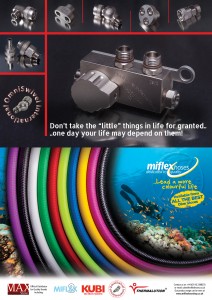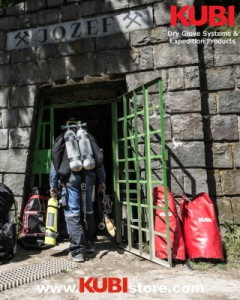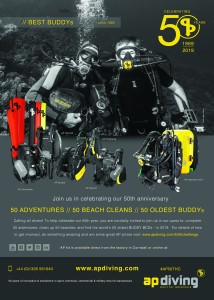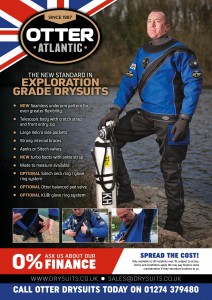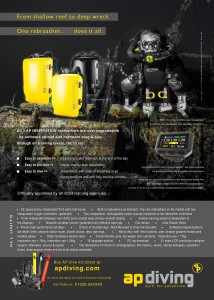DICTIONARY OF EGYPTIAN SHIPWRECKS-U
DICTIONARY OF EGYPTIAN SHIPWRECKS- U
FURTHER DETAILS CAN BE DOWNLOADED FROM
www.KUBIstore.com & www.Miflexhoseshop.co.uk
U35
The U-35 (a Type U-31 U-Boat) was considered one of the most successful U-Boats of WWI with 236 ships to its credit. Previously on the same day, the U-35 had attacked and sank the HMS Tara and towed the lifeboats and survivors ashore at Bardia.
U
V11B class submarine built in Bremen by Bremer Vulkan in 1939, launched a year later. She was 66 mtrs long, with a max speed of 17 knots surfaced,7.5 submerged, fitted with 5 torpedo tubes, one 88mm gun, one 20mm machine gun.
U79
.
The U-79 was A VII-C class German submarines: she was built in Bremen by Bremer Vulkan during 1940, and launched during 1941.The submarines of the VII-C class were 67.10m long; displacement 769 tons (surfaced) 871 tons (submerged); max speed 17.7kn (surfaced) 7.5kn (submerged); five 533mm torpedo launchers; one 88mm gun, plus one or two 20mm or one 37mm machine gun. They were designed to dive down to -220m.
The U-79 sank three enemy ships in six missions, totalling 10000 tons.
13 Mar, 1941 – 30 Jun, 1941 1. Flottille (training)
1 Jul, 1941 – 30 Sep, 1941 1. Flottille (front boat)
1 Oct, 1941 – 23 Dec, 1941 23. Flottille (front boat)
2 ships sunk for a total of 2.983 GRT
1 ship damaged for a total of 10.356 GRT
1 warship a total loss for a total of 625 tons
On December 23, 1941, the British destroyers HMS Hotspur and HMS Hastey spotted U-79 when she was North of Sollum, and attacked her with depth charges. The entire crew OF 44 abandoned the submarine, without loss of life..
She was responsible for sinking 7 merchant ships and two warships over 5 missions amounting to 39000 tons between Dec 1940 and March 1941. She was the front boat for the 7th and 23rd Flottilles
On December 28th, 1941 she was attacked by the destroyer HMS KIPLING near Marsa Matruh. She was sunk by depth charges. 14 crew were killed. There were 30 survivors
U577
Built by Blohm und Voss at Hamburg in 1940, launched 1941.S he was a V11-C class submarine, 67 mtrs long and displaced 769 ton surfaced and 871 submerged. She had a depth rating of 220mtrs. Armed with 5 torpedoes, one 88mm gun and two 20mm machine guns. She completed three missions between 3rd July 1941 and 15th Jan 1942 with 7th and 29th Flottilles without any kills
Herbert Schauenburg
Born on 29 May, 1912 in Delmenhorst.
Crew 31. Korvettenkapitän (1 Jan, 1942)
Died on 9 Jan, 1942, Mediterranean.
Commands; U-20, U-577
On the 15th January 1942 while north west of Mersa Martuh a British Fairley Swordfish from 815/g squadron attacked and sunk her with depth charges, with the loss of all 43 hands
U 652
V11C CLASS German submarine built at Hamburg by Howaldtswerke, launched in 1941.This class of U boat was 67 mtrs long, displaced 769 tons surfaced and 871 tons submerged. She had 5 torpedo launchers, one 88mm gun and 2 20mm machine guns. Her maximum rated depth was 220 mtrs.
On 4 September 1941, the American destroyer USS Greer had been signaled by a British bomber, that a German submarine was hiding in the vicinity. Greer found sound contact, and pursuedU-652 from close range. The aircraft dropped 4 depth charges, and left the scene, leaving the two fighting ships. Soon after the U-boat fired a torpedo at the US warship, s believing she ha attacked. After this USS Greer went into attack, and a 2 hour battle followed, during which she dropped 19 depth charges, and the U-boat fired another torpedo, without results
She sank 21000tons of shipping over 8 missions, including the HMS HEYTHORP, before she was attacked by depth charges from a Fairley Swordfish.The crew were rescued by U81 and she was scuttled at 31 55 N 25 11E
Georg-Werner Fraatz
Born on 30 Mar, 1917 in Hamelin.
Crew 35. Korvettenkapitän (1 Mar, 1943)
Died on 15 Feb, 1943, North Atlantic.
U559 (GERMAN U BOAT)
The German submarine (or Unterseeboot U-559 was a Type VIIC submarine (Feldpost No. M 38 782), one of 568-577 built, which played a small, but significant role in the Allied fight against the Axis powers during WWII. Built at Blohm & Voss shipyard, Steinwerder, Hamburg, Germany (Yard No. 535) for the German Kriegsmarine, she was ordered 16 October 1939, laid down on 01 February 1940, launched 08 January 1941, and commissioned 27 February 1941, commanded by Hans Heidtmann, the U-boat’s only commander.
Unterseeboot Type VIIC technical data:
Displacement: (tons) 769 (surfaced), 871 (submerged), 1070 (total)
Length: (m) 67.10 overall, 50.50 (pressure hull)
Beam: (m) 6.20 overall, 4.70 (pressure hull)
Draught: (draft) 4.74 meters
Height: 9.60 meters
Power: (hp) 3200 (surfaced), 750 (submerged)
Speed: (knots) 17.7 (surfaced), 7.6 (submerged)
Range: (miles / knots) 8500/10 (surfaced), 80/4 (submerged)
Torpedoes: 14, 4/1 (bow / stern tubes)
Mines: 26 TMA
Deck gun: 88/45 (220 rounds)
Crew: 44-52 men
Max depth: ca. 220 meters (722 feet)
U559
The U559 was originally supposed to serve in the Altantic, serving with the 1st Flotilla out of St. Nazaire patrolling the Wester Approaches (Patrols: 04 June-05 July 1941, 26 July-22 August 1941, and 20 September-20 October 1941). During these patrols the U-559 only sank one ship, the British freighter S.S. Alva (3,255 tons) in Convoy OG-71 on 19 August 1941.
During the first part of her third patrol, she was reassigned to the Goeben Group, which were the first U-boats to enter and operate in the Mediterranean Sea during WWII. The U-559, based out of Salamis, Greece, participated in three patrols in the Mediterranean with the 23rd Flotilla (24 November-12 December 1941, 16-26 February 1942, and 04-21 March 1942) sinking three ships (The 1,060 ton Austrailian Frigate HMAS Parramatta on 27 Nov. 1941, British 3,059 ton freighter S.S. Shuntien on 23 Dec. 1941, and the Polish 2,487 ton freighter S.S. Warszawa on 26 Dec. 1941).
Assigned to the 29th Flotilla on 15 April 1942, she had two additional successes with an attack on Convoy AT-49 which resulted in the sinking of the Norweigian 4,681 ton freighter M/V Athene, and the damaging the British freighter S.S. Brambleleaf, both on 10 June 1942.
On 30 October 1942, the U-559 was reported to have been seen surfaced approximately 70 miles north of Port Said. The HM Destroyers Pakenham, Petard, Dulverton, Hero, and Hurworth were ordered to proceed from Alexandria to relieve the HMS Echo who had been searching for the submarine. With assistance fram a Wellesley aircraft of the 47th Squadron, the U-559 was finally located and the ships commenced a barrage of depth charges which lasted 10 hours, eventually damaging the submarine’s pressure hull which forced it to surface at around 2240 near the Petard. The Petard, shining a spotlight on the submarine and seeing the submarine’s number and its donkey emblem on the conning tower, fired at the conning tower, damaging it with a 4-inch round. The crew of the submarine opened seavalves and petcocks in order to scuttle the submarine before abandoning it. Captain Hans Heidtmann surrendered the sinking vessel and the crew of the U-559 were taken aboard the Petard and hastily taken below-decks so that they would not be able to see what was going to happen next.
The Petard’s First Officer, Lt. Anthony Blair Fasson, dove into the water, followed by Able Seaman Colin Grazier and Canteen Assistant Thomas (Tommy) Brown, and swam to the U-559 and boarded her. Fasson and Grazier went below in search of any important documents or materials. Located in the Captain’s cabin were what were later determined to be the Kurzsignalheft (short signals) and Wetterkurzschlssel (short weather key) code books used for deciphering ENIGMA messages, among other important documents. All of these were passed up through the conning tower to Tommy Brown who loaded them onto a small boat moored alongside the submarine. Tommy Brown is said to have made three trips down the conning tower to retrieve more documents. Meanwhile, inside the U-559, the incoming seawater had risen to knee-deep while Fasson and Grazier continued looking for documents. The submarine suddently heeled over and sank at position 32.30N/33.00E in approximately 73 meters of water taking these two men to the bottom with it. Tommy Brown was able to escape and return to the Petard.
The Petard then proceeded to Haifa where the code books were then sent to Bletchley Park in England where the British used the information to break the ENIGMA code, which eventually helped turn the tide of the war in the Allies favour, saving thousands of tons of supplies and ships, as well as thousands of lives.
For their sacrifice, Lt. Fasson and AB Colin Grazier were award the George Cross posthumously. Thomas Brown was promoted to Senior Canteen Assistant and awarded the George Medal. The Victoria Cross had been considered but it was decided not to award it because this event was not in the “face of enemy action” and possibly because it may have brought too much publicity to the event, which the British government certainly wanted to be kept secret.
The story of the U-559 does not end here however. Lt. Commander Peter Keeble, who was attached to a salvage unit based in Alexandria, was recruited to dive on a submarine located somewhere off the coast of Beirut in ordered to recover from the sunken submarine U-307 an infra-red device of some kind that was able to illuminate enemy targets. In his book, “Ordeal by Water”, he describes the preparation for the salvage evolution. A mock-up of the submarine’s control room was built and Keeble practiced entry and exit while blindfolded. Keeble was able to enter the submarine’s conning tower and made his way to the control room, while on the way encountering a human body which he assumed to be a German crew member. Using his dive knife he had to cut his way through the body in order to continue into the control room. Once in the control room he located the “device” and removed it, forgetting to defuse a self-destruct device that he had been told of in advance. While removing the “device”, he was repeatedly tapped on his dive helmet by the hand of another dead body wearing a wedding ring. Keeble successfully exited the submarine and returned to the surface after completing his decompression stop at 27 meters. The “device” was then secreted off to the British government.
Here is the mystery concerning this dive and the submarine’s identity: The U-307 never operated in the Mediterranean Sea. In fact, the U-307 wasn’t even commissioned until after the U-559 had sunk! (Commissioned 18 November 1942). Additionally, the two dead bodies encountered were at, or near, the locations which Fasson and Grazier would have been at during the sinking of the submarine. So, did LT CDR Keeble actually dive on the U-559? Many people believe so….
Captain Hans Heidtmann spent the next 4 and a half years in captivity in Egypt, Canada, and England until his release in May 1947. In January 1958 he joined the Bundesmarine where he served in several staff positions until he retired in September 1972 as “Kapitan zur see”. He passed away 05 April 1976 in Hamburg, Germany.
Thomas Brown was immediately returned to England after it was discovered that he had lied about his age in order to serve his country. He was only 16 years old! Ironically, he died in 1945 at the age of 18 when his family’s home in Lily Gardens, N. Shields caught fired and burned. Some resources state that he died while trying to rescue his 4 and a half year old sister, Maureen, who also died in the fire.
S.S. ULYSSES
THE VESSEL
The Ulysses was at the Leslie yard on the Tyne for the Ocean Steamship Company. She joined other vessels on the fleet with Greek Mythology theme; amongst them Achilles, Ajax, Hector, Priam , Menelaus, and Sarpedon .She was launched in 1871, and was described as an “iron hulled single screw steamship” and was. 310 ft long with a 30 ft beam,a draught of 20 ft and grossed . 1900 tons . Like the Carnatic, Dunraven and Kingston she was rigged for sail, with a single 2 stroke, 2 cylinder steam engine capable of producing 225 HP driving a single iron propeller.
The board of Enquiry records show that she left London docks in August 1887 bound for Penang via the Suez Canal. The master was A Mr Bremner and although very experienced this was to be his first and last voyage to the Red Sea Two days out of Suez found the Ulysses clear of Sha’ab Ali. The calm seas, and light air meant that many of the uncharted reefs were invisible; no line of white surf, no sound of waves breaking over a reef. the early hours of the 16th, the Ulysses struck Gobal Seghir. At first it seemed that the damage was slight and the pumps could easily handle the small amounts of water being taken on. Regarding the incident as nothing more than an unfortunate grounding, the captain decided to wait and seek help from any passing ship. Just before daybreak the lights of the British Steamship “Kerbela” came by and raised the alarm on reaching Suez. Stuck fast on the reef the captain refused to jettison any cargo, convinced the vessel would eventually be pulled free. For four days the vessel grounded on the coral, slowly the coral ground its way through the iron hull. By the 18th, the sea had got up and the stern was down , her stern rails and steering gear awash. The following day, escorted by HMS FALCON two barges with salvors arrived from Suez .Crews from all vessels now worked in the hot sun to unload the cargo, but soon the pumps failed. As the wind got stronger the barges moved inside bluff point for fear of being swept onto the same reef by the mounting swell. That meant the cargo had to be man handled over reef, lagoon. Sand spit, more coral then out to the barges. Despite these gallant efforts which lasted nearly two weeks, the ship began to slip back off the reef with her bowsprit slowly reaching for the sky. She was abandoned and left to her fate. By the 5th September the stern was on the seabed, 27 mtrs below and the ship broke her back, her fore section on top of the reef was relentlessly pounded by the waves and has now become totally disposed over the shallows.
Ulysses sister ship Hector, built at the same time and bearing the first letter of her name on the funnel, a fleet signature .
The iron framework, minus the wooden decking hold firm on the main section of the wreck.
IDENTIFYING THE WRECK
For many years the wreck’s identity remained obscure. Known only as “the cargo boat at Gobul Segeira Gradually the list of “suspects” was reduced as contenders such as the Kingston, Carina and indeed the Carnatic were identified.The first two by myself and the latter by Lawson Wood. (The Dunraven was identified back in the mid seventies, of similar style she could easily have been a contender) In the late eighties I obtained a set of books affectionately known as DODAS; The Dictionary of Disasters at Sea during the age of Steam. Therein was a record of the Ulysses “aground at Gobul”. It took several more visits to the wreck before she finally confirmed her identity to us. The steamship companies name on a piece of crockery, confirmed along with close inspection of the drive system and power unit as well as the remains of the cargo. DODAS also told us where she was built; – in the north east of England, where more evidence of her identity was to come to light.
THE WRECK TODAY.
Her beautiful rounded stern lies in 29 mtrs, embedded in sand, with her hull open to the sea lying on her port side. Her prop and rudder, still intact and are covered in a luxuriant gown of soft corals and the hull and keel form a cave in which huge groupers lurk and are covered in corals sponges, hydroids and anemones. The hull itself forms a current point and is a great place to observe travellies, and jacks marauding. The hull also forms a v shaped area with the reef and here resident crocodile fish can be observes along with superb fan corals with resident long nosed hawkfish. Some of the cargo lies scattered around the seabed, covered in lush soft corals. Midship and aft sections are totally accessible, as all the planking has long since been devoured by marine worms. In this respect she is not unlike the Carnatic, with iron cross braces for each deck forming a criss cross pattern; stunning when viewed from inside and some of her general cargo remains inside. There are also branches of the delicate black coral growing here so care is needed when entering the hull. Forward the bow and fore sections are mangled up with the remains of the older wreck. Inside the hull the huge fly wheel and engine can be observed. Dead eyes, bollards, winches and railings, even a bath and the steering assembly can still be seen. Back in the bow section the almost obligitory Glass fish hang in clouds with Lionfish ever vigilant. Scorpion fish too are in abundance and the entire wreck is a delight for the photographer. Strong currents can be experienced flowing over the wreck so good site knowledge is essential. The shallows are teeming with fish including Tangs, Surgeons and triggers, which dart in and out of the scattered remains in only 2 mtrs.
The wreck is a haven of life ,turtles , several types of moray eels., surgeon fish, scorpion fish, anthea’s fusiliers, sweepers and glass fish, each with their own patch, the inevitable but fierce clown fish, plus for the sharp eyed frogfish, ornate ghost pipefish and a host of nudibranchs, plurobranchs and flatworms, while jacks, trevellies and tuna patrol the surrounding waters, especially off the stern.. Add to all of this a covering of lush corals , both hard and soft and you have a paradise for bug hunters and photographers alike .Perhaps the reason for this is that the wreck itself lies on one of the very best reefs in the Sinai area ,that and the brisk current which sweeps past the wreck.
